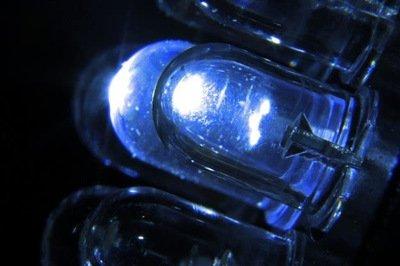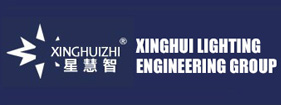How to improve the white LED light efficiency? What are the solutions?

1, blue chip type white LED to enhance light efficiency
a) Enhance the internal quantum efficiency to generate more blue light in the active region and reduce the absorption at the blue output. With the development of epitaxial growth technology and multi-quantum well structure, the internal quantum efficiency of ultra-high brightness LEDs has been very large. Improvement, blue LED has reached more than 90%;
b) Improve the light extraction efficiency, adopt the flip-chip structure to avoid the electrode and gold wire of the formal structure to block the light; balance the contradiction between the light absorption and the diffusion current of the transparent conductive film; the bottom reflection layer causes the blue light to reflect in the front light direction; the surface pattern or surface Roughening technology avoids excessive total reflection due to large difference in refractive index; etc.; packaging material close to the refractive index of the chip;
c) improving the external quantum efficiency of phosphor photoluminescence conversion, developing phosphor materials and ratios with high photoluminescence conversion efficiency;
d) Improve the light-emitting efficiency of the package. The high refractive index of the package material is beneficial to the extraction rate of the chip light, but it also increases the difference in refractive index from the air. For the planar package, it causes the total in-reflection with the air interface. Increasing, thereby reducing the light extraction rate, therefore, a secondary transparent encapsulation layer with a refractive index transition can be considered on the planar package; in addition, for non-planar packaging, the phosphor coating thickness is improved and The shape and the shape of the package structure avoid excessive total reflection of the emitted light due to the large difference in refractive index.
The highest light efficiency of blue chip type white LEDs is mainly limited by four parts:
1 The internal quantum efficiency of blue light is estimated to be no more than 90% (under high temperature influence, while low power normal temperature can reach about 95%);
2 The light extraction efficiency of the epitaxial layer is estimated to be no more than 85% (the total reflection angle determined by the refractive index of the material of GaN and silica or epoxy resin in the formal and vertical structures is about 42°; the total reflection threshold of GaN and Al2O3 in the flip-chip structure) The angle is about 46°; it is estimated that the pattern optimization will not exceed 75°);
3 The highest quantum efficiency of blue light converted to white light is estimated to be no more than 70% (see the most efficient lossless single-spectrum 555nm green light, and the photoluminescence efficiency of all blue light converted to 555nm monochromatic green light is less than 78%);
4 Phosphor layer white light out of the ball type package efficiency is not more than 95% (plane package output rate will be much lower, this one is usually less concerned, because light from silica gel or epoxy resin to the total reflection of air The critical angle is only about 42°).
The integrated optical efficiency of the four parts multiplied is estimated to be no more than 50%; that is to say, the luminous efficacy of the blue chip type white LED does not exceed 340 Lm/W.
According to reports, the world's highest luminous white LED is the US CREE company announced in March 2014 that 303Lm / W. It is close to the limit of the estimated white LED efficacy of the above analysis.
Green Lighting Brief History Series of Semiconductor Lighting (4)
Progress in Light Efficiency of White LEDs in Silicon Carbide Substrate of American CREE Laboratory
China's current domestic LED light efficiency has also gradually caught up with the international advanced level. Many years ago, the Nanchang University team in China used pre-rasterization etching on silicon wafers to alleviate the cracks and dislocation defects caused by the large difference in thermal matching during the cooling process after GaN growth. The key components of MOCVD equipment were improved by special measures. The trachea" to improve the uniformity of GaN growth and other independent patented technology, broke through the key technology of high-efficiency GaN-based blue light-emitting diodes on silicon substrates, and became the third country to master the independent intellectual property rights of blue-light LEDs after Japan and the United States. It broke the situation that Japanese sapphire substrate and American silicon carbide substrate have long monopolized the core technology of international LED lighting, and formed a global three-pronged force with Japanese and American technology. According to the "2018 China Blueprint for the Development of Semiconductor Lighting Industry" released by the National Semiconductor Lighting Engineering R&D and Industry Alliance: "In 2018, China's industrialized white LED light efficiency level reached 180Lm/W, silicon-based yellow light (565nm@20A/cm2) electro-optic The conversion efficiency is 24.3%, and the electro-optical conversion efficiency of silicon-based green light (520nm@20A/cm2) is 41.6%". This is commendable, but in the semiconductor integrated circuit industry, 8 inch, 12 inch and other mainstream large-size silicon wafers should be applied to the LED lighting industry on a large scale. At present, the mainstream is still a small size sapphire substrate below 6 inches in the LED lighting industry. When the chain has formed a first-mover advantage, the process maturity and low-cost advantages of the silicon wafer itself cannot be exerted. It is expected that when the industrial chain such as packaging equipment is upgraded to a mainstream with 6-inch or more substrates, the large-volume demand for silicon-based LEDs will continue to return to its original cost less than sapphire and gallium nitride substrates. A lot of advantages, when the market prospects for silicon-based LED applications are very bright.
2, RGB white LED to enhance light efficiency
In the early days, because of the low light efficiency of red light, especially green LEDs, the RGB type consisting of three red, green and blue LEDs is limited to display or decorative lighting applications. With the gradual improvement of green LED light efficiency, RGB type White LEDs enter practical lighting. The main advantages of RGB white LEDs are: First, there is no need for phosphors to convert light. This alone can theoretically reduce at least 20-30% of the photoluminescence energy conversion losses in blue chip-type white LEDs; secondly, Easy to adjust color temperature and color, which is very important in smart lighting applications. However, the main disadvantage of RGB white LEDs is that the efficacy of green LEDs is still not high, resulting in a total luminous efficiency that is currently much lower than that of blue chip-type white LEDs; another RGB three LEDs must be strictly matched with luminosity and chromaticity distribution. The light color distribution curve of the three LEDs of red, green and blue should be smooth and completely consistent and the projection direction is consistent, otherwise the luminosity and chromaticity unevenness in different distances and directions are serious; there are also three LEDs of red, green and blue. Three sets of power supply systems complicate the drive circuit and increase the cost.
3, UV chip type white LED to enhance light efficiency
The uneven distribution of luminosity and chromaticity is an inherent defect inherent in blue chip type white LEDs and RGB type white LEDs, but to a different extent. Since the human eye does not perceive the ultraviolet light, the ultraviolet light emitted by the ultraviolet LED chip is absorbed by the red, green and blue primary color phosphors in the package coating and converted into white light, so the ultraviolet chip type white light LED has no chromaticity distribution like the conventional fluorescent lamp. The unevenness of the photometry is also much better than the blue chip type and the RGB type, which is its greatest advantage. The main disadvantage of UV chip type white LEDs is that, in general, when the spectral envelope of phosphor photoluminescence conversion is similar to the continuous spectrum of blue light white light, the ultraviolet chip type white light LED has higher luminous efficiency than the blue chip type. Low, the shorter the ultraviolet wavelength, the lower the conversion efficiency (the light conversion efficiency of the phosphor under 254 nm ultraviolet light does not exceed 50%), and the manufacturing difficulty is multiplied, so it is theoretically impossible to use the short-wave ultraviolet chip for illumination. Make white LEDs. In addition, high-efficiency phosphors for long-wave UV excitation are needed. Moreover, the author suggests that the spectrum emitted by the phosphor after conversion should be like the three primary colors of the energy-saving fluorescent lamp, such as red, green and blue, forming a discrete discontinuous spectrum, each of which is a narrow spectrum, and the green peak should be close to the highest light efficiency of 555 nm. The green light with red and blue light may easily exceed the limit light efficiency of the 340 Lm/W blue chip type white LED. Of course, even if the phosphor can do this, the current half-width of the light-emitting wavelength of the LED chip is not too wide, and the 254-nm working ultraviolet light generated by the low-pressure discharge in the conventional fluorescent lamp cannot be matched with the phosphor by its very narrow wavelength half-width. The effect may still be poor.





